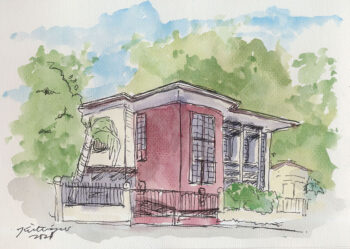Hunger is a global reality that continues to haunt millions of people across the planet. “Hunger is a serious global issue that affects millions in developing countries, particularly Asia. According to the World Food Programme, there are 842 million people suffering from hunger across the world, and 98 percent of that total amount live in developing areas within Asia, the Pacific, Africa, Latin America and the Caribbean. As the largest and most populous continent, Asia is home to approximately 4.427 billion people. Unfortunately, a large amount of that population suffers from hunger. (Source: http://borgenproject.org/%E2%80%8Bten-facts-hunger-asia/– accessed 2 September 2015)
Two-thirds of the total Asian population go hungry every day; making Asia the continent with the most hungry people. (Source: https://www.wfp.org/hunger/stats – accessed 2 Sept 2015). In the Philippines, the average number of hungry people among the households constituted 17.9% of total population in 2007 and rose to 18.3% last year. Meanwhile, families experiencing “severe hunger” partly increased in the past decade from 3% in 2004 to 3.5% in 2014, with Luzon having the highest rate. Hunger incidence in the National Capital Region had the biggest drop, from 23.5% in 2013 to 16% in 2014. Hunger incidence in Mindanao also decreased, but increased slightly in Luzon and the Visayas. (Source: IFPRI) The Philippines lags behind most ASEAN countries, especially Thailand, Malaysia, Vietnam and Indonesia; our country ranks 29th in the world in terms of the Global Hunger Index (GHI), just behind Iraq and Lesoto.
Hunger is of course related to the poverty situation of most Filipinos. “According to the National Anti-Poverty Commission (NAPC), one in every four Filipinos live in poverty (19.1%) or an equivalent of 24.3 million Filipinos. While this figure is three percent lower than the 2012 poverty statistics, it also means 19 of every 100 Filipino families do not have food security or are having a hard time accessing food. The Philippine Statistics Authority (PSA), in its official poverty statistics for the basic sectors for 2012, reports that five of the nine basic sectors have higher poverty incidence than the general population… According to the Freedom from Hunger, in the urban areas of the country alone, more than 20 percent of the population—more than 15 million people—are considered undernourished. ‘Close to one-third of Filipino children under five are moderately or severely underweight,’ the Freedom from Hunger reports, adding that the current statistics are ‘thought to be much worse in rural areas of the Philippines.’” (Source: Julius D. Mariveles and Cong B. Corrales, PCIJ Blog, accessed 15 October 2015).
These statistics are, indeed, alarming and should have brought our government officials into a comprehensive program to combat hunger. One of the contributing factors for the persistence of hunger across the country is the regular occurrence of disasters; both natural and man-made calamities. The bad news is that – if the PAGASA weather forecasts which have regularly been reported in media in the past three months are correct – the worse is still to come. And the impact of such a disaster is already at our doorstep. I refer to the projected intense El Niño which has already started in some parts of the country which is projected to result in extreme drought in the months to come. This could last till March or even June 2016.
We know this for a fact as we are currently engaged in the conduct of a mission among the eleven barangays of the Nuing Mission Station (NMS) in Jose Abad Santos (JAS), Davao Occidental. The goals of this mission include: strengthening the Base ecclesial communities among the Catholics, administration of sacraments (especially baptism and matrimony), but also to respond to the needs of the people (e.g., assisting the Lumad in the issuance of their Certificate for Ancestral Domain, implement sustainable agriculture and health programs, fishing project and the like). The majority of the people here are Lumad, mainly Sarangani Manobo and some B’laan and Sangil (who are Muslims). Thus, we also would like to facilitate inter-faith and ecumenical dialogue.
Among these 11 barangays, 6 are along the coastal areas facing the Celebes Sea while 5 are in the uplands where practically all inhabitants are Lumad. The 2010 NSO population of JAS is a total of 69,631 residents. The eleven barangays under the NMS has a total population (based on the 2010 NSO data) of 24,919. This could easily have increased to almost 30,000 by 2015).
Owing to various reasons – geographical distance, isolation from the lowlands, poor infrastructure, the Lumad’s loss of ownership/control over their ancestral domain/land, limited government service reaching the uplands, limited income capacity of most residents, etc. – poverty is the lot for most inhabitants. Those in the coastal areas are a little better-off as income could be derived from fishing and other income-generating activities. But in the uplands, the Lumads mainly rely on what can be extracted from the earth. Unfortunately, owing to incursions into the uplands, the Lumads are losing full control over their ancestral domain. The recent developments, however, have added to their woes and lamentations.
Things are starting to get really worrisome for them. During normal years (when nature is abundant and luck is on the side of the people), by late September and early October, they would have harvested their upland rice and corn planted 4 months ago when there was rain. Unfortunately, this harvest season was hit by RAT INFESTATION. The harvests so far have been very dismal with little left after the rats invaded the fields. Food harvested would last only for a month or so.
Now comes El Niño. Last week, there were only drizzles there, no more heavy rains. This means the next planting season – which usually starts in October – is supposed to have began. Some are risking their seeds to start planting; but with little rain and no rains expected, these seeds may not grow. There will be no harvest by February 2016; and if there still are no rains, there will be no planting season that usually begins in April. Already there are signs that there could be hunger for most of the Lumad families in the uplands starting end of October for some and mid-November for most. Christmas will be bleak and relief goods will already be required, because camote, camoteng kahoy, other root crops and bananas may have all been consumed by late November.
This means a repeat of the long drought that hit Mindanao in 1997-1998 which gave rise to Tabang Mindanao. Word is that the 2015-2016 drought maybe worse. Thus there is reason for the people to be worried. There is the other dismal scenario that could unfold. The campaign period will begin in March 2016 when hunger would have worsened. Who could blame the people if votes will have to be sold, given that each vote could be bought for a thousand pesos or more? Who could blame the people if they sell their vote to the highest bidder?
When news reached us as early as July regarding the projected drought, we began meeting with the officials of the MALOKA (for Malahutahong Agrikultura, Lumadnong Organisasyon, Kinaiyahan Panalipdan – the indigenous people’s organization in the NMS uplands) and then later with their members to engaged in disaster preparedness. We are hoping to collaborate with the local LGU’s own response to the disaster as well as other NGOs that are beginning to also be concerned with this issue. Much work needs to be done and the next months will show if we have prepared adequately for this crisis situation.
In the past few months, the issue of the Lumad killings in Mindanao (especially in Surigao) hit the mass and social media. This issue has now drawn a lot of local, national and international attention as it should, given the seriousness of the impact of militarization and the violation of the Lumad people’s rights. As the State’s response to de-militarize Lumad territories remain weak and the military insists on their combative presence in these territories, this issue will not get resolved soon enough.
Meanwhile, one more crisis that could claim more lives caused by El Niño is knocking on the doors of the abode of Lumads across Mindanao.
[Redemptorist Brother Karl Gaspar of Davao City, Academic Dean of the Redemptorists’ St. Alphonsus Theological and Mission Institute (SATMI), and author of several books, including the recently launched “Desperately Seeking God’s Saving Action: Yolanda Survivors’ Hope Beyond Heartbreaking Lamentations,” writes two columns for MindaNews, one in English (A Sojourner’s Views) and the other in Binisaya (Panaw-Lantaw)].







